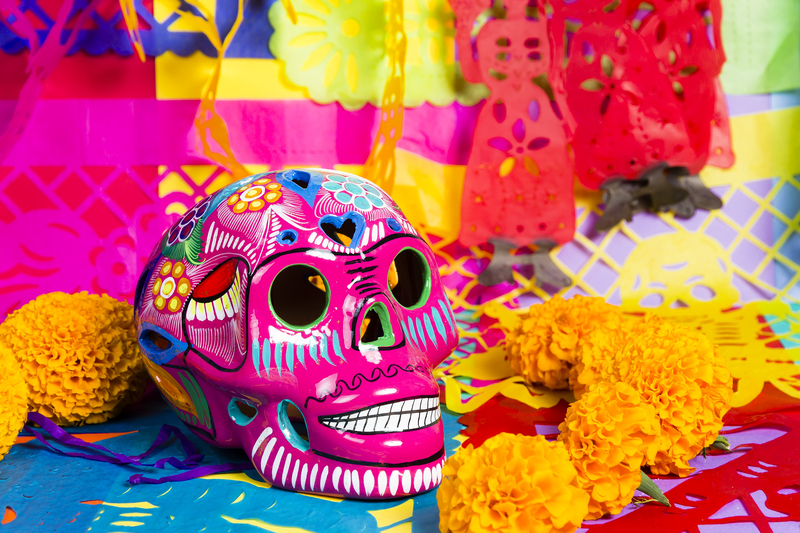Golden blooms: 8 Astounding Facts About Sunflowers Waiting to Be Discovered
Posted on 01/07/2025
Golden Blooms: 8 Astounding Facts About Sunflowers Waiting to Be Discovered
Sunflowers, with their radiant golden petals and statuesque stems, are one of nature's most captivating creations. Golden blooms have charmed people across continents for centuries with their beauty, symbolism, and surprising utility. Yet behind every vibrant sunflower is a story far richer and more complex than most realize. In this article, we'll delve deep into the world of sunflowers, uncovering eight astounding facts that promise to elevate your appreciation of these golden flowers to new heights.
1. Sunflowers Aren't Just One Flower--They're Hundreds
One of the most fascinating aspects of sunflowers--also known as Helianthus annuus--is their structure. At first glance, it may appear that a sunflower is a single, large blossom. In reality, each sunflower head is a composite of hundreds, sometimes thousands, of tiny individual flowers!
- Floret Explosion: The central disk of the sunflower is made up of disk florets, each capable of developing into a seed. What looks like a single flower is actually a bustling floral metropolis packed into one golden bloom.
- Petal Arrangement: The outer 'petals' are called ray florets, and while they resemble petals, each is a separate flower designed by nature to attract pollinators.
This unique floral structure is why sunflowers are classified as composite flowers, a defining trait that sets them apart from most other garden bloomers.

2. Sunflowers Track the Sun--But Not Forever
Heliotropism is the term for the sunflower's most enchanting feature: its ability to follow the sun as it travels across the sky. This phenomenon has been observed since ancient times, but how does it actually work?
How Do Sunflowers Move?
- Young sunflower plants actively tilt their heads from east to west during the day, maximizing exposure to sunlight and promoting vigorous growth.
- At night, the head reorients back to the east, preparing to catch the first rays of dawn.
- As sunflowers mature and begin to bloom, this movement stops. The fully grown flower will remain facing east, which has been found to attract more pollinators by warming up early in the day.
This adaptation is not only a marvel of botanical engineering but is essential for optimizing the plant's energy production and reproductive success.
3. Sunflowers Are Agricultural Superstars
The economic importance of sunflowers goes well beyond their cheerful looks. They are one of the world's most productive oilseed crops, and their seeds offer a wealth of nutritional benefits.
Key Uses of Sunflowers in Industry & Cuisine
- Sunflower Oil: Extracted from the seeds, sunflower oil is prized for its mild flavor, high smoke point, and abundance of healthy unsaturated fats. It's a staple in kitchens and food manufacturing globally.
- Animal Feed: After oil extraction, the protein-rich meal is a valuable feed supplement for livestock.
- Healthy Snacks: Sunflower seeds, roasted and salted, are a beloved healthy snack, packed with vitamin E, magnesium, and selenium.
- Biofuels: Sunflower oil's potential as a sustainable biofuel makes it a key player in renewable energy research.
Golden sunflowers, with their adaptable nature and multiple uses, truly deserve their reputation as an agricultural powerhouse.
4. Sunflowers Have Deep Roots in Culture and History
Since ancient times, the sunflower has held a prominent place in cultures around the world. Originating in North America, these golden blooms played significant roles in native societies long before their iconic status in modern gardens.
- Native American Heritage: Tribes such as the Hopi and Aztec cultivated sunflowers for food, oil, dyes, and ceremonial uses.
- Symbol of Loyalty and Longevity: In many cultures, sunflowers symbolize unwavering faith, adoration, and long life, thanks to their steadfast turning toward the sun.
- Global Spread: After European explorers brought the sunflower to the Old World, it quickly became an agricultural staple in Russia, Ukraine, and Argentina.
- Artistic Icon: The golden bloom has inspired countless works of art, with Vincent van Gogh's sunflower paintings among the most beloved masterpieces in Western art history.
Sunflowers have left indelible marks on art, literature, cuisine, and ceremony across continents--a testament to their enduring appeal.
5. They Come in More Colors and Shapes Than You Think
When we picture a sunflower, it's usually the classic yellow-gold giant with a brown center. However, the genus Helianthus boasts a diversity that goes far beyond this stereotype.
- Color Spectrum: Through selective breeding and hybridization, golden sunflowers now exist in shades of red, orange, burgundy, and even creamy white.
- Shape and Size: From towering varieties over 12 feet tall to compact dwarf sunflowers perfect for container gardens, there's a sunflower for every space.
- Pollen-Free Blooms: Some ornamental sunflowers have been bred to produce no pollen, making them ideal for allergy sufferers and long-lasting bouquets.
Golden blooms are endlessly versatile, with a form and hue to fit every garden, bouquet, or artistic vision.
6. Sunflowers Are Champions at Soil Remediation
Among the most surprising hidden talents of sunflowers is their ability to restore and detoxify damaged environments. This process, called phytoremediation, uses certain plants to clean up pollutants from soil and water.
- Heavy Metal Absorption: Sunflowers can absorb toxic substances including lead, arsenic, and uranium through their roots, reducing the concentrations in contaminated habitats.
- After Nuclear Disasters: After the nuclear incidents at Chernobyl and Fukushima, sunflowers were planted to help extract radioactive isotopes from the soil.
- Eco-Friendly Restoration: This technique is increasingly used in land reclamation projects, making the golden bloom a hero of green technology.
From beautifying landscapes to rehabilitating hazardous sites, sunflowers' power goes well beyond ornamental value.
7. Golden Sunflowers Support Bees and Biodiversity
It's no secret that pollinators such as bees and butterflies are vital to healthy ecosystems, and sunflowers are among their favorite plants.
- Bees' Best Friend: The large, open faces of sunflowers are loaded with nectar and pollen, making them a magnet for bees, including native wild bees and honeybees alike.
- Food for Birds and Wildlife: Ripe sunflower seeds attract finches, chickadees, and even squirrels, sustaining wildlife through autumn and winter.
- Boosting Crop Yields: When sunflowers are planted along with other crops, they can help increase pollinator activity, benefiting nearby plants and boosting yields.
Including golden blooms in your garden is a simple way to support pollinators, biodiversity, and the broader environment.
8. The Tallest and Biggest Sunflowers Break World Records
The sunflower is not just a symbol of cheer--it's a champion in the world of records. Sunflowers' rapid growth, height, and sheer size have dazzled gardeners and inspired friendly competition for centuries.
- Sky-High Sunflowers: The current Guinness World Record for the tallest sunflower is an incredible 9.17 meters (30 feet, 1 inch), grown by Hans-Peter Schiffer in Germany.
- Mammoth Blooms: The largest sunflower head on record measured over 32 inches (82 cm) across.
- Speedy Growth: Sunflowers can often shoot up several inches in a single week, making them one of the fastest-growing annual plants you can cultivate at home.
- Fun Fact: Children and gardeners worldwide love to hold their own sunflower-growing competitions every summer, inspired by these golden giants.
Whether you're a gardening enthusiast or just enjoy watching the towering progress of this golden bloom, sunflowers offer one of the most dramatic growth spectacles in the plant world.

Frequently Asked Questions About Sunflowers
How long do sunflowers live?
Golden sunflowers are generally annuals, meaning they complete their lifecycle--from seed to bloom to seed again--in a single growing season, typically lasting a few months.
Can sunflowers grow in pots?
Absolutely! Dwarf varieties of sunflowers are ideal for pots and balconies, requiring just a sunny spot and regular watering.
Are all sunflowers edible?
Most sunflower seeds are edible, but be sure to choose cultivars bred for consumption. Ornamental types may have bitter seeds or low yields.
What do sunflowers symbolize?
Sunflowers symbolize adoration, loyalty, and longevity in various cultures, thanks to their sun-seeking tendencies and vibrant, enduring blooms.
Conclusion: The Many Wonders of Golden Sunflowers
From their surprisingly complex biology and remarkable environmental roles to their deep cultural roots and record-breaking growth, golden blooms have earned their place as one of the planet's most beloved and impressive flowers. The next time you admire a sunflower's sunny face, remember: you're witnessing a marvel of nature, history, and ingenuity--all bundled up in a golden blossom.
- Try planting your own sunflowers to enjoy these wonders up close.
- Share these astounding sunflower facts with friends and family to spread the joy and fascination.
There's always something new to discover in the world of golden sunflowers--nature's most spectacular blooms.
Latest Posts
Achieve Durable Joy with Poinsettias
Office plant solutions for those with minimal time and effort to spare
Peony Petals: A Palette of Symbolic Significance







